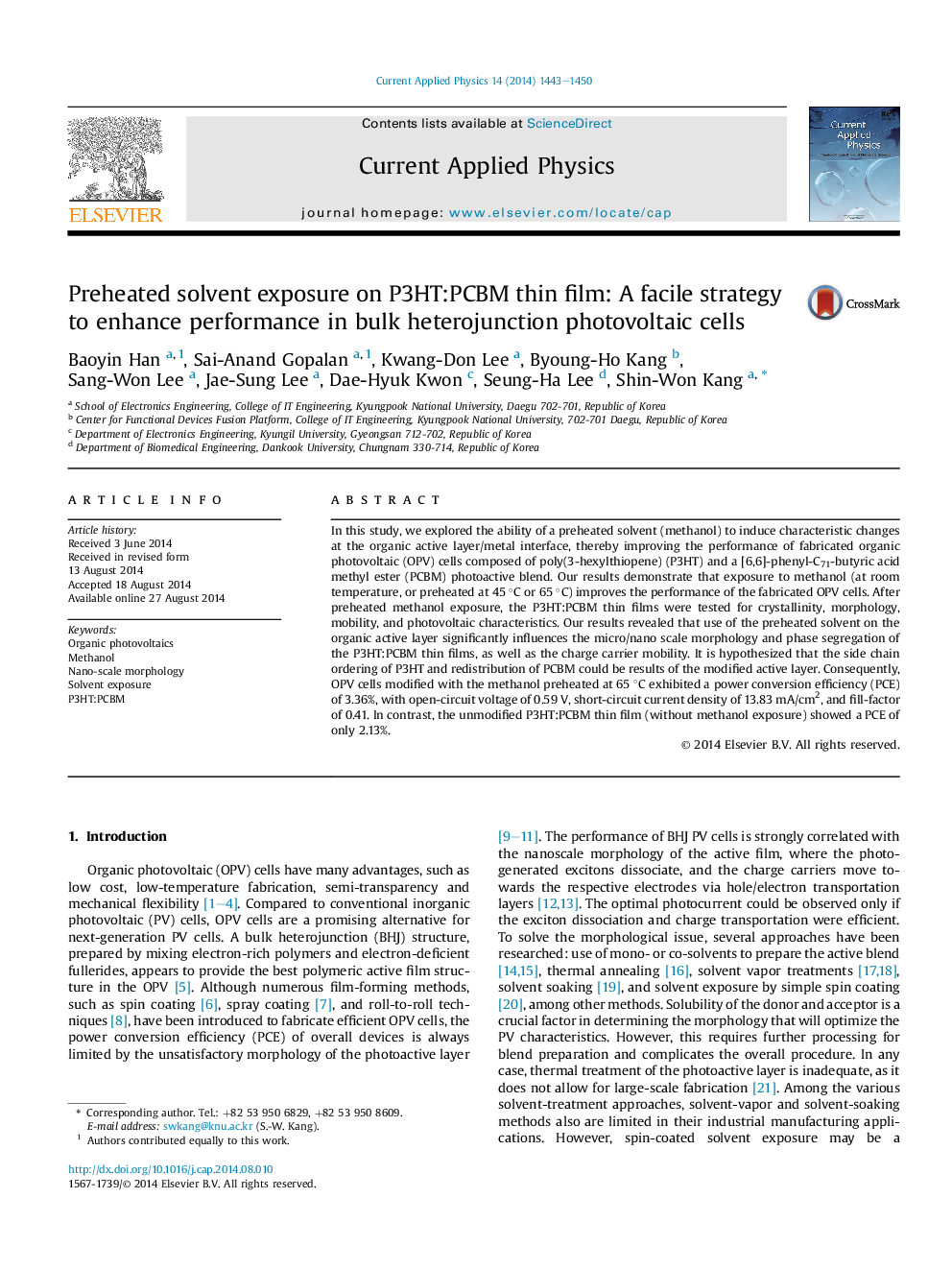| Article ID | Journal | Published Year | Pages | File Type |
|---|---|---|---|---|
| 1786294 | Current Applied Physics | 2014 | 8 Pages |
•Adopted a facile preheated solvent (methanol) exposure strategy.•Preheated solvent atop P3HT:PCBM (blend) film was investigated.•Solvent modified blend film influenced the organic/metal interfacial properties.•Witnessed an overall improvement of ∼57% for methanol preheated@65 °C.
In this study, we explored the ability of a preheated solvent (methanol) to induce characteristic changes at the organic active layer/metal interface, thereby improving the performance of fabricated organic photovoltaic (OPV) cells composed of poly(3-hexylthiopene) (P3HT) and a [6,6]-phenyl-C71-butyric acid methyl ester (PCBM) photoactive blend. Our results demonstrate that exposure to methanol (at room temperature, or preheated at 45 °C or 65 °C) improves the performance of the fabricated OPV cells. After preheated methanol exposure, the P3HT:PCBM thin films were tested for crystallinity, morphology, mobility, and photovoltaic characteristics. Our results revealed that use of the preheated solvent on the organic active layer significantly influences the micro/nano scale morphology and phase segregation of the P3HT:PCBM thin films, as well as the charge carrier mobility. It is hypothesized that the side chain ordering of P3HT and redistribution of PCBM could be results of the modified active layer. Consequently, OPV cells modified with the methanol preheated at 65 °C exhibited a power conversion efficiency (PCE) of 3.36%, with open-circuit voltage of 0.59 V, short-circuit current density of 13.83 mA/cm2, and fill-factor of 0.41. In contrast, the unmodified P3HT:PCBM thin film (without methanol exposure) showed a PCE of only 2.13%.
Graphical abstractFigure optionsDownload full-size imageDownload as PowerPoint slide
